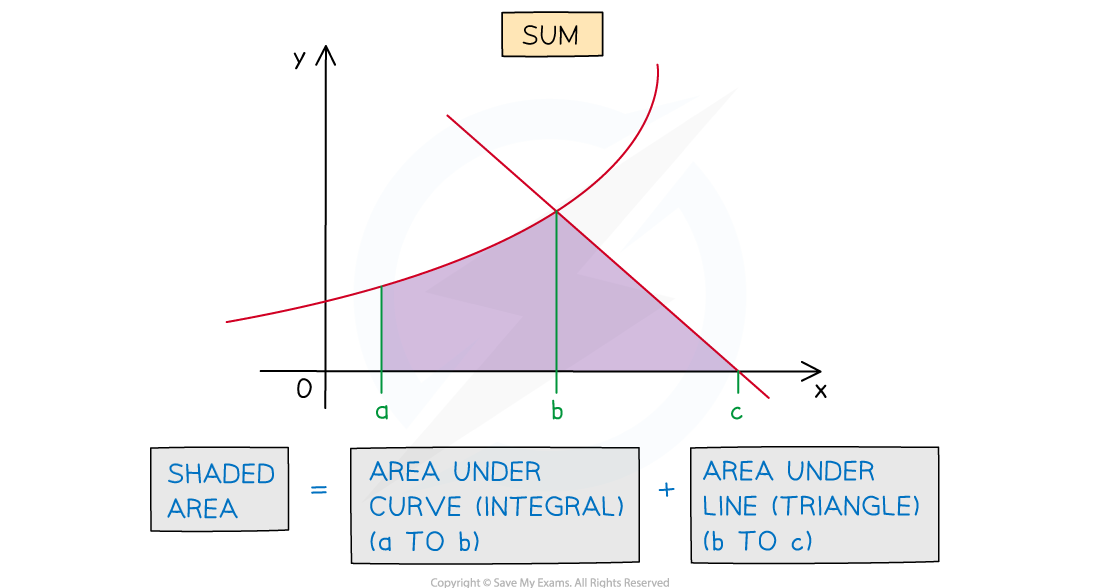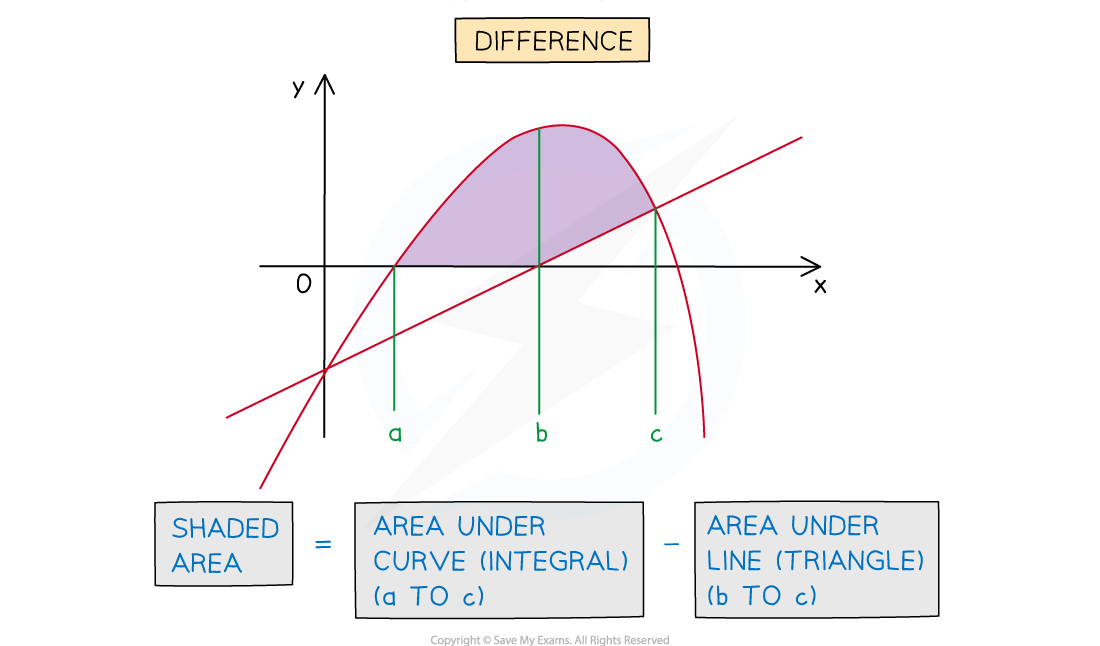Area Between a Curve and a Line (DP IB Analysis & Approaches (AA)): Revision Note
Did this video help you?
Area between a curve and a line
What do we mean by 'area between a curve and a line'?
Areas whose boundaries include a curve and a (non-vertical) straight line can be found using integration
For an area under a curve a definite integral will be needed
For an area under a line the shape formed will be a trapezium or triangle
Basic area formulae can be used rather than a definite integral
Though if using a GDC, one method is not particularly trickier than the other
The total area required could be the sum or difference of the area under the curve and the area under the line


How do I find the area between a curve and a line?
STEP 1
If a diagram is not given, use a GDC to draw the graphs of the curve and line and identify the area to be found
STEP 2
Use a GDC to find the root(s) of the curve, the root of the line, and the x-coordinates of any intersections between the curve and the line.
STEP 3
Use the graph to determine whether areas will need adding or subtracting
Deduce the limits and thus the definite integral(s) to find the area(s) under the curve and the line
Use a GDC to calculate the area under the curve,Remember to include the modulus (|...|) symbols around the function
Use a GDC to calculate the area under the line
This could be another definite integral, or
for a triangle or
for a trapezium
STEP 4
Add or subtract areas accordingly to obtain a final answer
Examiner Tips and Tricks
Add information to any diagram provided. For example:
Add axes intercepts, as well as intercepts between lines and curves
Mark and shade the area you’re trying to find
If no diagram is provided, your GDC can help you to graph one (and if you have time copy the sketch into your working)
Worked Example
The region is bounded by the curve with equation
and the line with equation
.
lies entirely in the first quadrant.
Find the area of the region R.


You've read 0 of your 5 free revision notes this week
Unlock more, it's free!
Did this page help you?